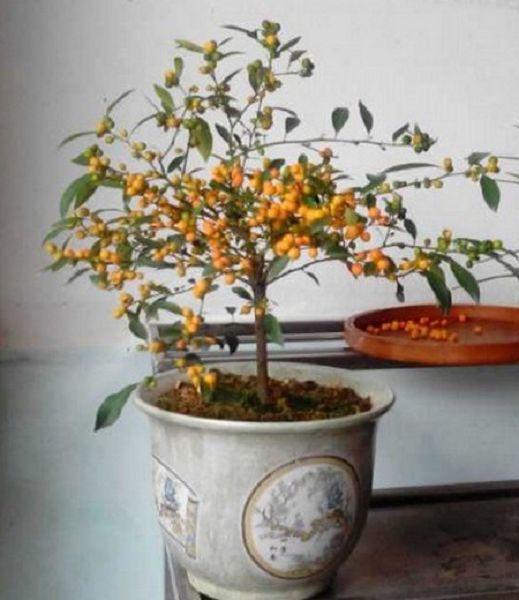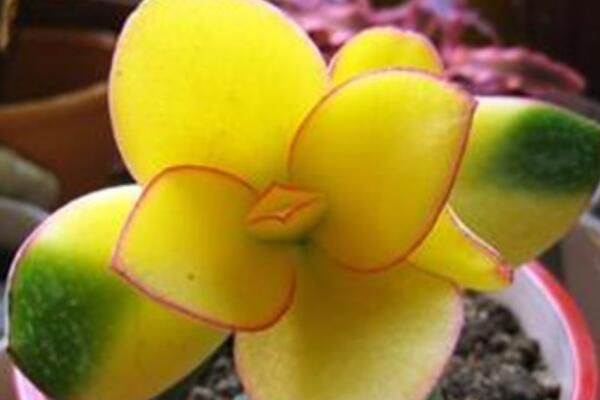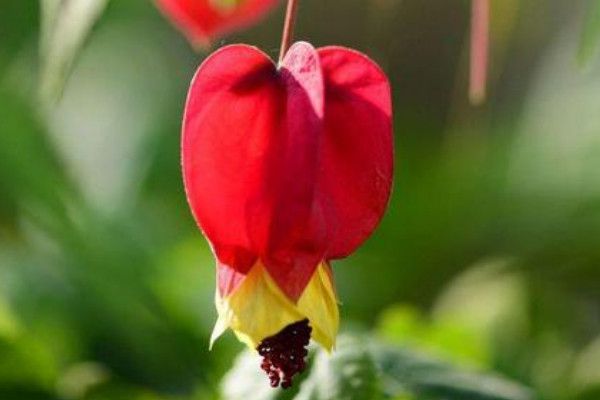Culture methods and matters needing attention of bonsai kumquat

Kumquat, alias are milk tangerine, orange tree, milk tangerine, jujube, golden bullet, kumquat, kumquat, horse water tangerine, kumquat, kumquat, Rutaceae, is a famous ornamental fruit plant. Especially in Guangdong and Hong Kong, many people buy for good luck during the Spring Festival. Kumquat is an evergreen shrub. Flowers solitary, white, fragrant. Most of the fruits are oval, golden, shiny, some varieties are edible, and most of them are propagated by grafting.
In general, kumquat culture should pay attention to the following points:
1. Temperature:
The suitable temperature for the growth of kumquat is 22: 29 ℃, and the optimum temperature for indoor display in the north is 10: 15 ℃. If the plant is still small and unfruited, the humidity of overwintering is 3: 5 ℃, which should not exceed 10 ℃, otherwise dormancy will be affected. When the outside temperature rises to 10 ℃ at night, move to outdoor maintenance to strengthen ventilation and light transmission. Move back indoors after the autumn is cool.
2. Lighting
Kumquat is a light-loving plant, the growing period is placed in a sunny place, hot summer exposure, can be a little shade. When viewing the fruit in winter, it is placed in the indoor light place. For dormant plantlets, light requirements are not strict in winter.
Kumquat prefers a warm and humid climate with plenty of sunshine and should be placed in a sunny place during maintenance. If the light is not enough and the environment is shaded, it will often cause branches and leaves to grow, blossom and bear fruit less. Because kumquat likes cool climate in summer, or summer sunshine intensity is large, it is better to put it slightly in the shade at this time. It is advisable to keep room temperature without icing in winter. If the room temperature is too high and the plant is not fully dormant, it will grow weak in the following year and it is easy to drop flowers and buds.
After March, most of the fruits of kumquat fell off naturally, and the remaining fruits were picked manually to save nutrients. At the same time, dense branches, cross branches, some overgrown branches and no light branches were removed. The retained one-year-old branches were heavily truncated, leaving 2-3 buds for each branch and outer buds for cutting buds, so as to make the crown open, ventilated and transparent.
In the flowering and fruit stage, pay attention to thinning flowers and fruits, keep the flowers blooming first, and get rid of late flowers and weak flowers. Generally speaking, the fruit rate of flower pedestal from May to June is higher than that of pick, so it should be retained more. Get rid of the flowers and fruits after July.
3. Put on the basin:
Kumquat is native to the subtropics and likes slightly acidic soil. When changing the basin in spring, keep part of the soil mass to protect the roots and trim the old roots too much. Two horseshoe slices are placed at the bottom of the basin, which are filled with a mixture of rotten sawdust and the same amount of garden soil, or a mixture of 8 portions of loose and fertile soil rich in humus and 2 portions of slag.
4. Skillful pruning
Pruning is an important technical measure to make kumquat blossom fruitful. In order to make the tree beautiful and fruitful, each year, before the sap begins to flow, a re-pruning is carried out before the spring buds germinate, cutting off withered branches, disease and insect branches, over-dense branches and overgrown branches, leaving only 2-3 buds at the base of each branch and cutting off the rest. In this way, more than 10 full spring branches can be germinated. When the new plant grows slightly to 15-20 cm, the heart is removed to make the plant shape plump, and a quick-acting phosphate fertilizer is applied at this time to promote flower bud differentiation.
When blooming, flowers should be thinned properly to save nutrients. After the young fruit is born, when the young fruit grows to about 1 cm, the fruit can be thinned, the sturdy branches leave 2-3 fruits per plant, the weak branches retain one fruit per branch, and the whole plant fruit evenly. Cut off the autumn a little in time, do not make the secondary fruit, in order to achieve the same shape and maturity, and improve the ornamental value.
5. Pour good water
Kumquat likes to be wet but avoid stagnant water, and the pot soil is easy to rot if the soil is too wet. Therefore, it is better to keep the basin soil moist during the growth period. It is dry and windy in spring. Spray water on the leaves once a day to increase air humidity. Spray water 2 or 3 times a day in summer, and spray water to the ground. But avoid spraying water during flowering to prevent rotten flowers and affect the fruit. The stagnant water in the basin should be dumped in time in the rainy season to avoid rotting roots. When you put it outdoors in summer, it is best to use bricks to cushion the flowerpot to facilitate drainage. Kumquat is sensitive to water from white flower stage to young fruit stage. At this time, the basin soil is too dry, the pedicel and fruit stalk are easy to detach and fall off; excessive watering, basin soil permeability is poor, but also easy to cause flower and fruit drop. Therefore, it is appropriate to keep the basin soil dry and wet at this time.
Water watering should grasp the principle of seeing dry and wet, and watering thoroughly. During the flowering period, the pot soil is slightly dry, and the fruit is watered normally after the fruit is stable. for example, when the soybean grain of young fruit is large, it can strengthen the fertilizer and water, and kumquat likes the humid environment. In the display and viewing period and the growing season, you should often spray water around the leaves and flowerpots, but do not spray on the flowers during the flowering period to avoid rotten flowers. The lower the dormant plants, the more controlled watering.
6. Apply enough fertilizer
Kumquat likes fertilizer, and the culture soil mixed with 4 rotten leaf soil, 5 sand soil and 1 cake fertilizer should be selected when potted. When changing the basin, apply hoof slices or rotten cake fertilizer to the bottom of the basin as base fertilizer. From the beginning of new bud germination to before flowering, mature shallow paste residue water can be applied every 7-10 days, and alum fertilizer water can be poured alternately several times. Rotten sesame sauce residue or compound fertilizer can also be applied under the dry topsoil and watered immediately.
Pay attention to a small amount of fertilization for many times, organic fertilizer must be fully mature, and the interval between the application of solid fertilizer is generally one month. No fertilizer is applied during the winter fruit viewing period. After the beginning of summer, it is appropriate to apply more phosphate fertilizer to facilitate bud pregnancy and fruiting. Results fertilization should be suspended at the initial stage, and liquid fertilizer could be applied once a week until the end of September when the young fruit grew to about 1 cm.
7. Pest control:
The main dangerous insects of kumquat are aphids, scale insects and red spiders, which can be controlled with 40% omethoate EC solution with 0.067% mass fraction or 40% solution with 0.67% mass fraction. Kumquat is an acid-loving flower, which is often yellowed and deficient in the north. A small amount of ferrous sulfate can be added in the preparation and culture, or 0.1% ferrous sulfate solution can be sprayed on the leaves in the growing season, once every 15-20 days. Or drop a few drops of vinegar when watering, or regularly pour alum fertilizer water containing 1% ferrous sulfate. In the case of poor ventilation and light difference, kumquat may have coal fouling disease, powdery mildew, etc., which can be prevented and treated with 70% methyl topiramate 0.125% 0.142% solution.
Related
- Fuxing push coffee new agricultural production and marketing class: lack of small-scale processing plants
- Jujube rice field leisure farm deep ploughing Yilan for five years to create a space for organic food and play
- Nongyu Farm-A trial of organic papaya for brave women with advanced technology
- Four points for attention in the prevention and control of diseases and insect pests of edible fungi
- How to add nutrient solution to Edible Fungi
- Is there any good way to control edible fungus mites?
- Open Inoculation Technology of Edible Fungi
- Is there any clever way to use fertilizer for edible fungus in winter?
- What agents are used to kill the pathogens of edible fungi in the mushroom shed?
- Rapid drying of Edible Fungi



